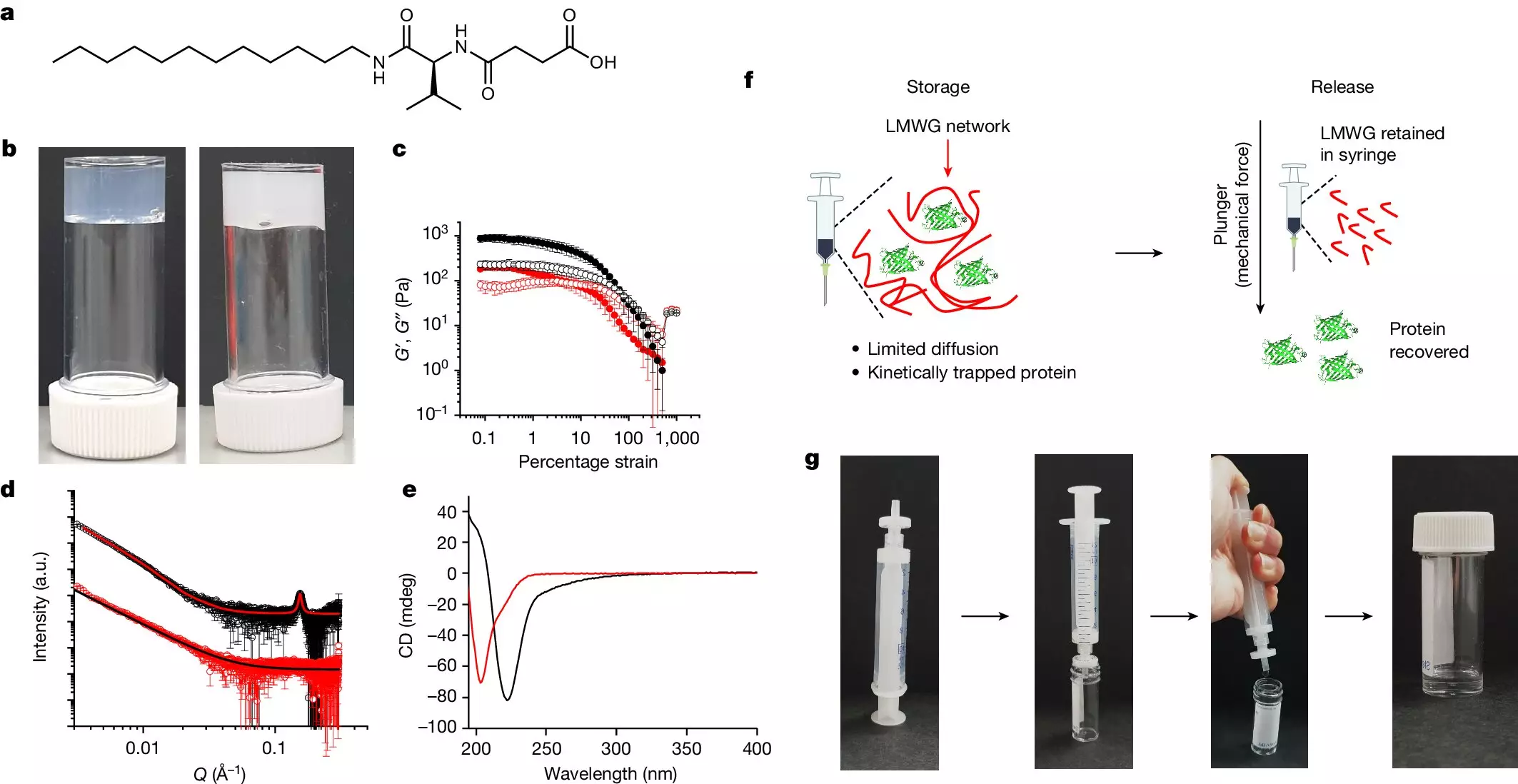In a remarkable advancement toward improving healthcare accessibility, a coalition of scientists has unveiled a cutting-edge hydrogel technology capable of storing protein therapeutics at temperatures reaching up to 50°C. This compelling research, recently published in the prestigious journal *Nature*, holds the promise of transforming the way essential medicines are distributed, particularly in developing nations where traditional cold storage facilities are either scarce or non-existent. The implications are profound: by mitigating the need for refrigerating these crucial substances, the new approach could enable broader access to life-saving treatments for diseases ranging from diabetes to cancer, ultimately helping to improve health outcomes on a global scale.
Protein therapeutics, which play a critical role in contemporary medicine, have historically posed a challenge in terms of stability during storage and transportation. Typically requiring extensive refrigeration to prevent deterioration, these medications are not only costly but also create significant energy demands, particularly in resource-limited settings. The innovative hydrogel, developed by researchers from the Universities of Manchester, Glasgow, and Warwick, changes this narrative significantly. By utilizing a low molecular weight gelator (LMWG), the team has built a robust three-dimensional network that retains proteins in a stable state, effectively eliminating the often tedious and restrictive “cold chain” logistics currently in use.
How the Hydrogel Works
The hydrogel operates through a unique structural mechanism. When proteins are introduced into the gel, they become ensnared within the interstices of the fibrous network, effectively preventing them from aggregating—a process that can diminish their therapeutic efficacy. This innovative design not only preserves the proteins during non-ideal conditions but also allows for straightforward extraction through the application of mechanical pressure. For instance, when the gel is housed within a standard syringe equipped with a specialized filter, a simple push of the plunger breaks down the gel network, releasing intact proteins for administration.
Professor Dave Adams, a key figure in this research, emphasizes the significance of this technology in addressing the logistical challenges that were quintessential during the COVID-19 vaccine rollout. The ability to transport therapeutic proteins without stringent temperature controls can fundamentally transform public health outreach, rendering even the most remote healthcare facilities capable of providing advanced treatments without worrying about infrastructure limitations.
Real-World Applications and Testing Outcomes
The researchers’ experiments on this hydrogel technology included testing its efficacy using two critical proteins: insulin and beta-galactosidase. Under strenuous conditions that far exceed normal transport scenarios, including exposure to high temperatures and agitation, the hydrogel successfully preserved insulin’s integrity, allowing the drug to be retrieved in its complete form. In a remarkable test, samples subjected to 50°C for seven days retained an impressive 97% of beta-galactosidase functionality, affirming the gel’s capabilities in extreme conditions.
Perhaps most illuminating was the transport experiment where protein samples housed in the hydrogel were shipped over two days. The results confirmed that not only did the gel maintain its structural integrity but it also safeguarded the proteins from any aggregation. Such findings herald the hydrogel’s potential not just for better storage, but for entirely rethinking how therapeutic proteins are delivered in an increasingly interconnected world.
The Broader Implications for Healthcare Equity
While the scientific achievements of this research are laudable, the implications go far beyond the laboratory. The potential of this hydrogel technology to democratize access to essential medications cannot be overstated. In developing countries where the healthcare supply chain is often fraught with inadequate infrastructure, the availability of room temperature-stable protein therapeutics can mean the difference between life and death for countless individuals. This innovation encourages a reallocation of resources, potentially allowing healthcare systems to position their focus on patient care rather than logistical complications.
Furthermore, the innovation doesn’t merely suggest an economic benefit; it embodies a paradigm shift in how we view health equity on a global scale. By minimizing the barriers imposed by cold storage requirements, this hydrogel opens doors to new markets, stimulates competition, and encourages pharmaceutical companies to invest in research for improved healthcare solutions tailored for underserved populations.
The researchers are currently exploring commercial pathways for this patent-pending technology, ensuring that its benefits can be translated into real-world applications that can further enhance patient outcomes across diverse healthcare landscapes. As this hydrogel technology continues to develop, it stands poised to not just reshape the realm of protein therapeutics, but also redefine the future of global health accessibility.


Leave a Reply